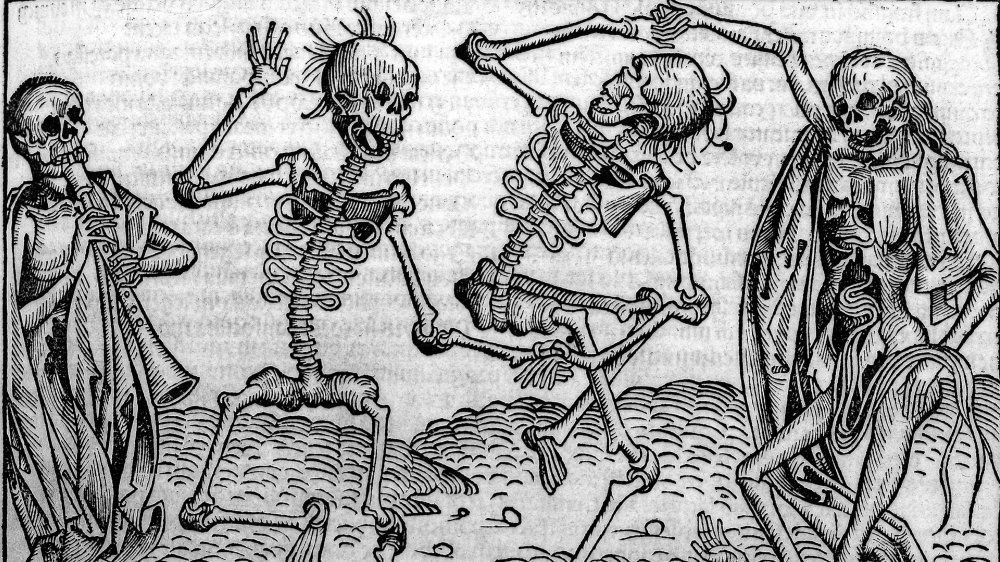The Messed Up History Of The English Sweats
The jeepers, the creepers, the heebie-jeebies, the sweats, the shingles, the shangles, the jingle bell Bojangles. If you think these sound like the names of archaic, medieval diseases that befell a public with no choice but to label illnesses based on their symptoms, then you're right. Well, at least you're right about "the sweats," more commonly known as "the sweating sickness" that befell Tudor England under the reign of King Henry VIII. This version of diseased sweating, you'll be relieved to know, is totally unrelated to the modern coronary affliction of "getting the meat sweats."
Not as well-known as its bigger, badder cousin the Black Death (otherwise known as bubonic plague), which once caused King Henry VI to ban kissing, the sweating disease was nonetheless a horrifying killer known by its chief symptom: sweating. According to History Today, the sweating disease made a resurgence five times from 1485 to 1551. No one knew the cause, and indeed no one could study infected people quickly enough because they died within 24 hours of first showing symptoms. What started as a fever and aches in the neck in the evening turned into death by the following afternoon, accompanied by a rapid heart rate and intense chest pain. Holinshed's Chronicles, published in 1557, called the sweating sickness "so sharp and deadly that the lyke was never hearde of to any manne's remembrance before that tyme." Bear in mind this was written by people who had survived the Black Death.
Don't bother seeing a doctor
The sweating sickness tore through society, relates History Extra, and affected people of all classes, all the way up to King Henry VIII himself and his mistress, Anne Boleyn. Henry was terrified of the disease, and self-isolated with his doctor close at hand to give daily check-ups. He ordered the Tudor court to be broken apart and its members sent from one safe house to another. Boleyn quarantined at her family home, Hever Castle, but even so, she actually contracted the disease, which had a fatality rate of over 50 percent. Amazingly, she survived. The poor were not so lucky, however, because they lived in tiny, poorly ventilated quarters in cities like London.
It's difficult to get a handle on what the sweating sickness actually was, although as the Pharmaceutical Journal reports, the most likely candidates are hantavirus infections or anthrax. As for vectors, mosquitoes are a possibility, although reports from physician John Caius in 1551 don't mention any kind of sting or rash among the disease's symptoms. An article in Discover Magazine supports anthrax as the cause. One expert cited is Yosi Rimmer, a medical historian in Haifa, Israel, who blames the illness on "a virus in the woods."
Viral infection is definitely the most likely candidate, though, and Rimmer goes on to attribute the disease's fast disappearance and anomalous final wave (lower death rate and a different population) to a mutation, meaning the disease never went away, at all.

